Top 10 Best Sounding Metal Master References
10. Honeycomb - Deafheaven
09. The Faded Line - Lamb of God
08. [Mind Over Mind] - Norma Jean
07. Blow Your Trumpets Gabriel - Behemoth
06. Bring Back the Plague - Cattle Decapitation
05. Immortal - Lorna Shore
04. The Seer’s Embrace - Dead to a Dying World
03. Betterment - Baptists
02. Liberation Frequency - Refused
01. Beat Up - Helms Alee
Picking out the best sounding metal masters isn’t easy - there are 100s if not 1000s of fantastic sounding tracks.
That said, we understand that the references listed here by no means cover the full scope of great-sounding tracks. They do, however, offer a diverse look at the world of metal music and can be used as references when mastering your own metal mixes.
Metal spans an incredibly expansive field of sub-genres, but some of the fundamentals remain the same when it comes to a great sounding record.

Metal spans multiple sub-genres. Having references for these sub-genres is important.
While recognizing this, we sought to find the best sounding metal masters and to include tracks/artists that cover some of metal’s scope.
The fundamentals we were looking for include an impressive by defined stereo image, a clear yet powerful low-frequency range, a balanced and textured mid-range, and aggressive but not abrasive high frequencies.
It’s good to keep in mind that being a loud genre, Metal may lack some dynamics. But good mixing and mastering engineers have a way of making a track sound both loud and dynamic.
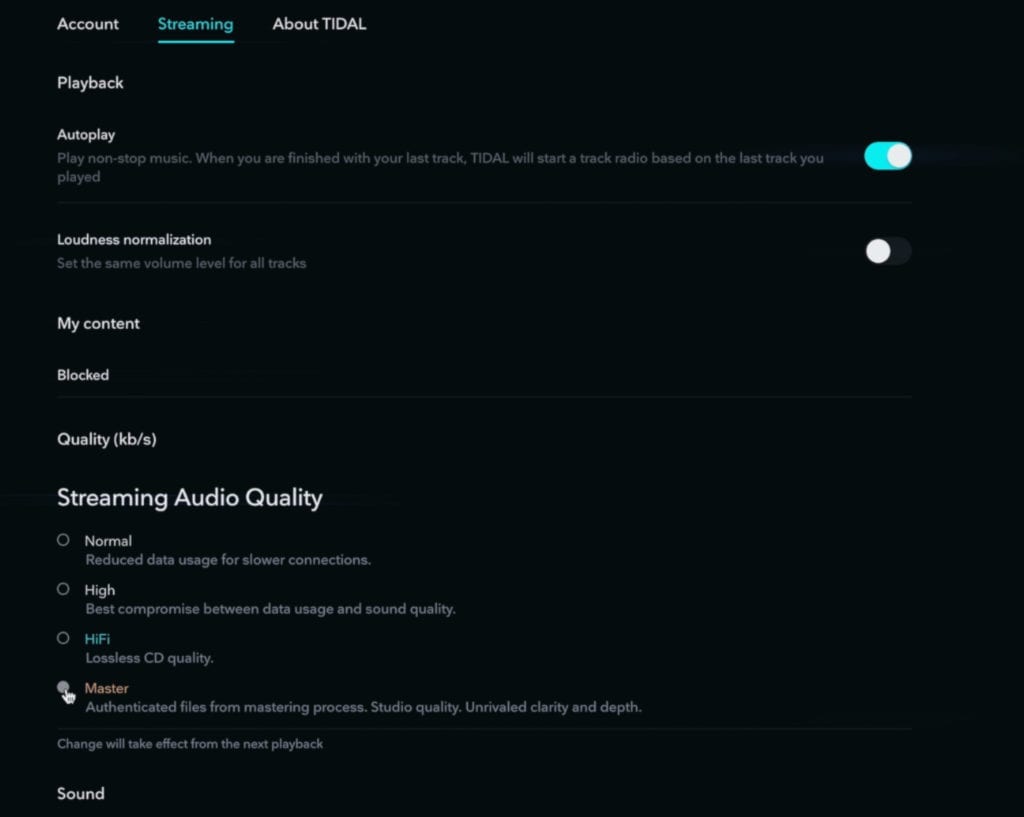
Listen to these tracks with the highest settings possible and with loudness normalization turned off.
When I listen to a metal master , I want to hear all of its instrumentation while still being hit with a wall of sound. I want the subtle sections to rival classical music in its detail, and the loud to be unparalleled in their impact.
This may be a lot to ask for, but these metal masters come close to hitting this mark.
Take a listen to these masters for yourself as we detail what makes them great. Keep in mind that in the video embedded above, we, unfortunately, cannot play the masters for copyright reasons , so if you could, follow allow with a separate streaming service - ideally Tidal due to their lossless audio formats.

The video embedded above unfortunately does not include the audio sample of these tracks due to copyright reasons.
Because Youtube and other video streaming services compress the audio into a lossy format, the need to listen to these tracks on your own may actually be a blessing in disguise.
Lastly, keep in mind that these masters are listed in no particular order.
Before we start covering these great references, if you have a metal mix that you want to hear mastered, send it to us here:
We’ll master it for you and send you a free sample to review.
10. Honeycomb - Deafheaven

Deafheaven blends shoegaze and grindcore music.
Deafheaven has spent the better half of a decade learning how to expertly blend metal and shoegaze. Although their past 3 albums have accomplished a mature sound, their latest album ‘Ordinary Corrupt Human’ in particular is masterfully engineered.
The track Honeycomb showcases some of the best metal production for their complex source material.
You’ll notice that no matter how expansive and borderline cacophonous the layered guitars become, the master remains balanced and driving. The low-frequency range is balanced and powerful, with a huge kick leading the way throughout the 11-minute track.

The guitars in this track are blended well, but could have easily become cacophonous.
The vocals are both blended and effortlessly float on top of the instrumentation.
This master is a great reference for any engineer trying to master an intimidatingly complex and layered mix. Both the mixing engineer and mastering engineer were able to find what worked and put the drums forward while gluing the instrumentation together.
The strategy resulted in a powerful and uniquely emotional master. It retains its power through a wall of sound, but never losses its transients and dynamics to over-compression.

The drums keep the track driving.
If you’re looking to create a cohesive and glued together master, and you’re working with heavy layers of guitar and a relentlessly loud composition, this master is a great reference.
09. The Faded Line - Lamb of God

Lamb of God are a well known group - the Faded Line has an incredibly transient and sharp sounding master.
Lamb of God is well-known to metal music fans - their hit ‘Laid to Rest’ is recognizable to even the most casual of metal and hard-rock listeners.
But the track ‘The Faded Line’ offers some of their punchiest and most transient moments. Whereas some metal compositions take a “wall of sound” approach, others offer refined and meticulously timed instrumentation.
This is the case with ‘The Faded Line’ as each note and drum strike is perceivable. The composition is only augmented by the mixing and mastering style, as quick compression release times and focused higher-order harmonic distortion results in an incredibly detailed sound.
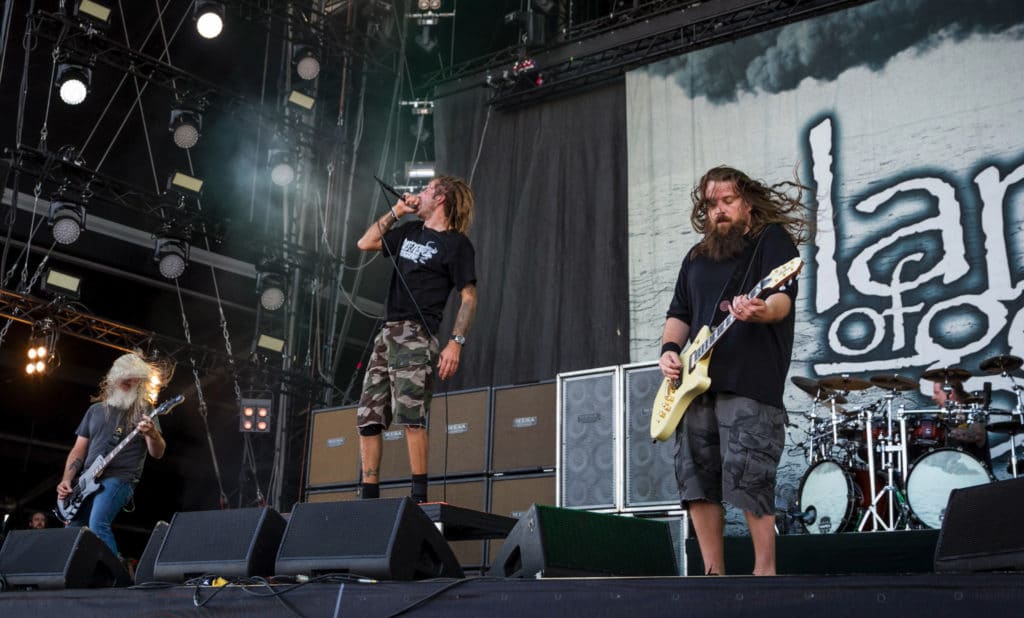
The band's instrumentation is meticulously timed - meaning the master needs to reflect these dynamics.
Everything about this master is catered to percussion - not just in the drums, but also in the chug of the guitars and the attack of the vocals.
If you’re creating a metal master or mix and you want everything to sound as transient and biting as possible, this is a great reference.

Setting a quick release time will help preserve the master's transients.
To accomplish a similar sound, avoid longer release times on your compressors and limiters. Try to find a sweet spot between transient detail and distortion, as quick release times will cause distortion if they’re too quick.
08. [Mind Over Mind] - Norma Jean

All Hail is a powerful and modern-sounding metal album.
Norma Jean has always walked the line between technical metal, and blurry lo-fi punk. Although some of their previous albums reflected this contrast with muddy mixes and masters, their latest material is refined and detailed.
[Mind over Mind] from their 2019 album ‘All Hail’ is a great example of how noise and cacophony can blend seamlessly with transient detail and a tight cohesive sound.
Whereas the drums in our last example (‘The Faded Line’ by Lamb of God) are more snap and pop then ring, the drums in ‘[Mind over Mind]’ carry more weight.

The master has enough space for the toms ring out, meaning the instrumentation has been properly placed in the mix, and the compressor release times have been well thought out.
Not only do they cut through the mix with transient detail, but there's even enough room for them to ring out into the surrounding instrumentation. This is especially true on the toms.
This master is more bass-heavy than others , as the guitars and bass guitar blend to create a balanced low-mid range. Although the instruments even maintain a position in the frequency response, they almost sound like one collective complex tone due to the compression and heavy distortion.
The vocals sit on top of the mix yet never seem out of place as their timbre matches the track.
If you’re looking to create a more modern-sounding metal master, one that sounds powerful, dynamic, and clear, [Mind over Mind] is a solid option.
If you want to learn how to master metal music, check out our blog post on the topic:
07. Blow Your Trumpets Gabriel - Behemoth

Blow Your Trumpets Gabriel utilizes both orchestral and traditional metal instrumentation.
Although most if not all metal tracks are created with an epic feel in mind, there are few tracks that can match the impressive nature of ‘Blow Your Trumpets Gabriel.’
The composition includes trumpets (as you might expect) orchestral percussion, and choirs, alongside more traditional metal instrumentation - all processed with expansive reverberation.
The stereo image Is wider than one would typically hear in a metal master, as all aspects of the instrumentation fill the available space. The intricate positioning of these instruments within the stereo field allows each the opportunity to be perceived and to shine through the complex mix during the right moments.

The master is loud and compressed, but not lifeless.
The master is loud and compressed, but never reaches the territory of being over-compressed and lifeless.
If you’re trying to create an epic master - one in which the composition blends both metal and orchestral pieces, take a listen to ‘Blow Your Trumpets Gabriel.’ This master shows how to push the boundaries of stereo width and imaging, without becoming unintelligible or messy.
06. Bring Back the Plague - Cattle Decapitation
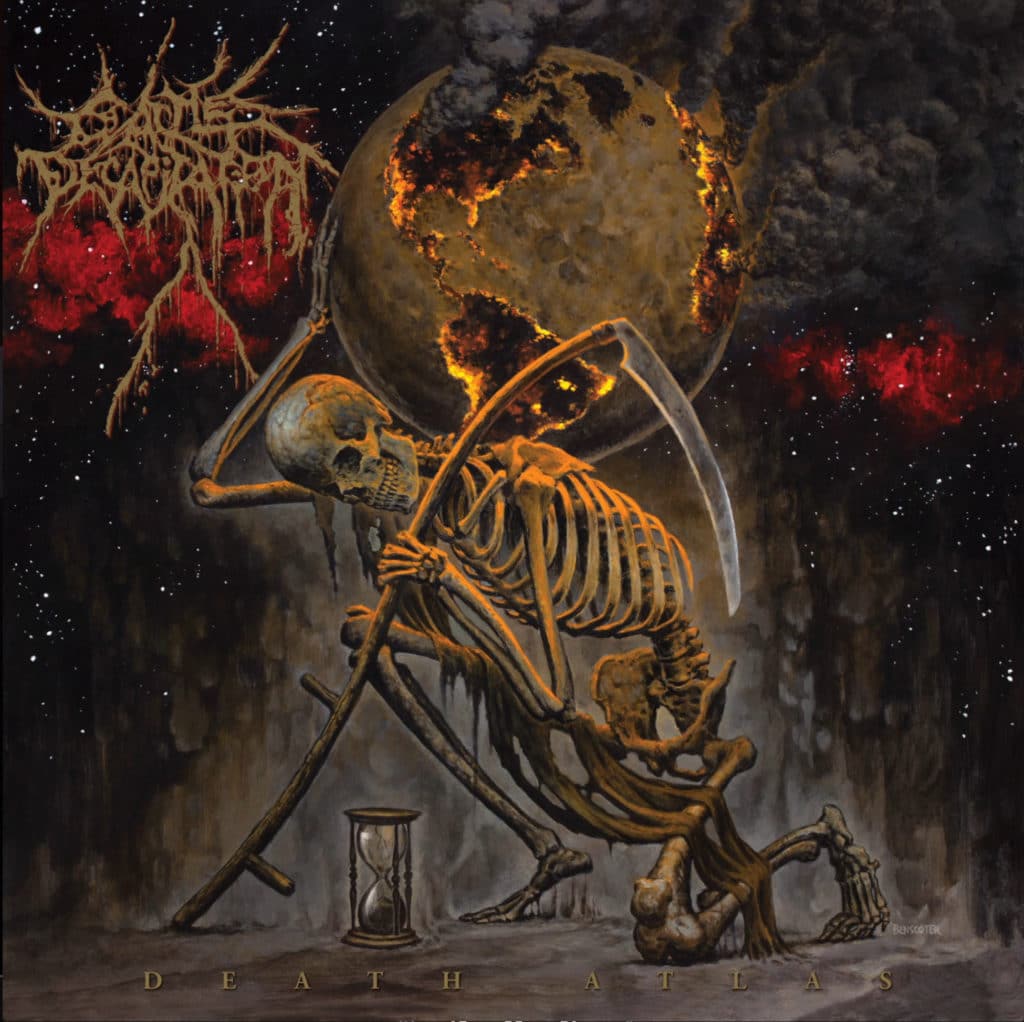
Bring Back the Plague shows how far grindcore and metal production has come.
Perhaps the heaviest sounding track on this list, ‘Bring Back the Plague’ showcases how far metal production has come. Only 10 years ago, most if not all Grindcore and Deathcore albums sounded noticeably “off.”
Whether it was lacking dynamics or an imbalanced frequency response, there was always something that seemed to obscure the sound. This wasn’t always to the genre’s detriment though, as it added to its aesthetic and helped augment the “horror-esque” themes of the lyricism.
That said, listening to ‘Bring Back the Plague’ by Cattle Decapitation is like hearing the Grindcore/Deathcore genre with a face-lift.

The frequencies, dynamics, and transient retention of this master is impressive.
The frequency response is balanced, the dynamics are present, and the transients cut through the wall of relentless instrumentation.
Everything about this master seems like its showcasing a genre that’s matured - one that’s production is understood and respected enough to be engineered with clarity.
If you make this sub-genre of metal and you’re looking for a good mix and master reference, this track is a fantastic representation of metal production.
05. Immortal - Lorna Shore

Immortal sounds like it was produced with samples and emulated guitar amps.
There’s a lot of positive things to say about ‘Immortal.’ The primary note is how this mix and master plays with dynamics in such an effective and impressive way.
Furthermore, this entry may represent the most modern-sounding metal production on this list; the song showcases virtual instruments and drums that are far too crisp to not be samples.
That said, with enough know-how and the right equipment, this level of production could be accomplished by an at-home engineer . This fact somehow makes the mix and master even more impressive.
The frequency response is balanced, the instruments are near-perfectly blended, and the transients always cut through.

A production like this one could be achieved from home.
Again, what’s most impressive about this master are the dynamics - certain hits in this song are so aggressive I question how they were accomplished without distortion. For example, listen to the first hit after the choir intro at 00:33 ; I honestly have never heard a punchier hit.
If you’re working on a metal track from home or utilizing a lot of samples and virtual instruments, there are a lot of ways to go wrong. But ‘Immortal’ by Lorna Shore shows you how you can make all of the right decisions in modern metal production.
If you have a metal mix that you want to hear professionally mastered, send it to us here:
We’ll master it for you and send you a free sample to review.
04. The Seer’s Embrace - Dead to a Dying World

This master sounds incredibly natural.
On first listen, this track doesn’t sound as impressive as some of the other masters that we’ve previously listed. That's understandable - it’s quieter, less punchy, and transient, and the instrumentation blends in a somewhat undefined manner.
But on closer inspection, you realize just how natural this track sounds. ‘The Seer’s Embrace’ offers real, not sampled instrumentation, and feels closer to an expertly recorded live performance than a heavily produced one.

It's clear that this master doesn't include samples - at least not drum samples.
The track shifts between distorted and clean tones, both of which are equally effective in representing the dark world created by the composition. Similarly, the high-frequency range feels muted, as if the majority of the recording above 5kHz has been attenuated.
The various passages of the track shift and swell in amplitude, but the mastering engineer preserved both the delicacy of the softer sections and the aggressive impact of the louder ones.
If you’re making more ambient metal, and you’re attempting to recreate realistic tonalities and dynamics, take a listen to this reference.
03. Betterment - Baptists
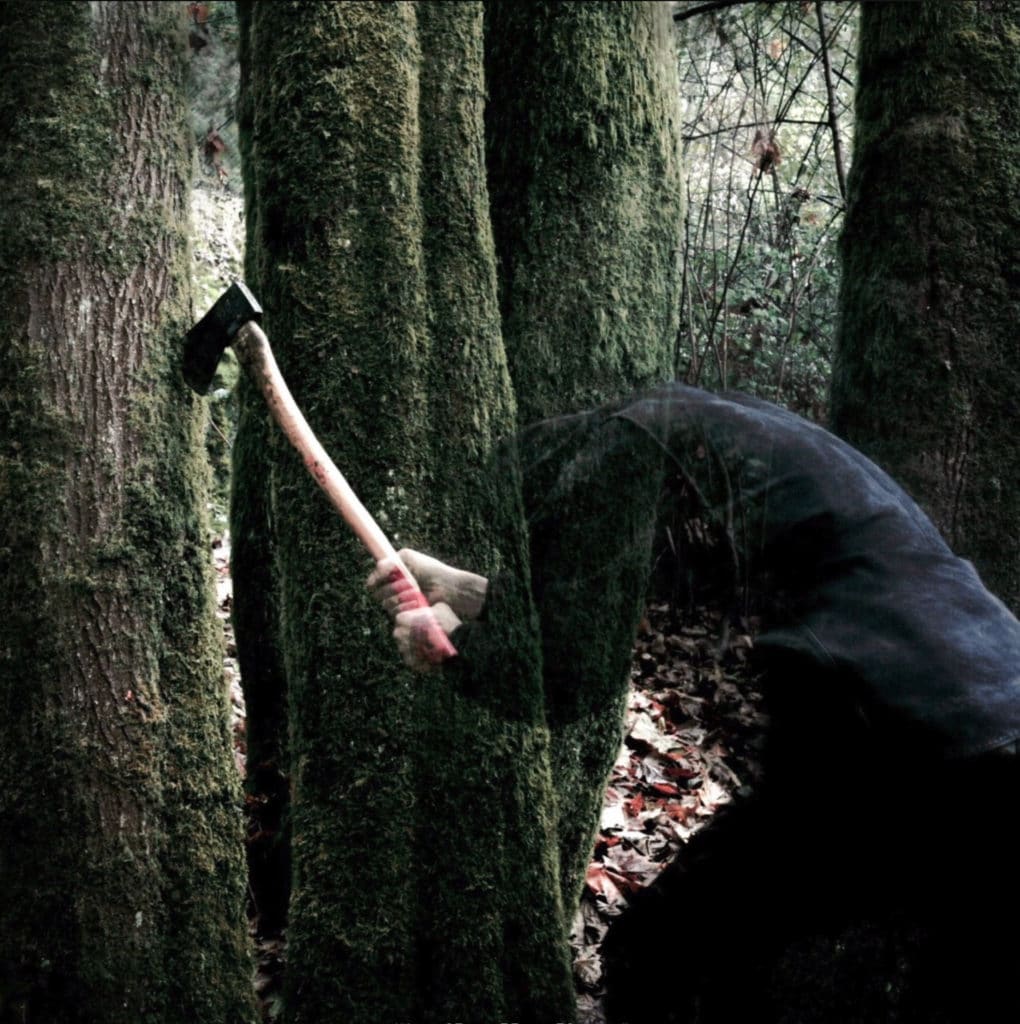
Betterment by Baptists is a great example of the punk-metal genre.
Sometimes ugly suits metal music better - this is exactly the case with the opening track of Baptists’ first album ‘Bushcraft.’
The track ‘Betterment’ introduces the listener to their punk-infused metal style and maintains some of the rough-around-the-edges production associated with DIY recordings.
In that regard, this track feels a lot like Nirvana’s ‘Bleach’ album ; it sounds like it was recorded in a garage using mid-grade recording equipment, and mixed in a way that highlights that lo-fi environment instead of trying to hide it.

This type of master and recording could be achieved with a smaller DIY studio.
The track is littered with amp noise and has some of the most aggressive pumping I’ve heard in a rock or metal master. Somehow, these flaws augment the master.
This master proves that you don’t need perfect equipment or a Studio A recording environment to create an impactful and impressive track.
If you’re recording your metal music in a DIY space or a smaller studio, ‘Betterment’ by Baptists should provide a good target for the finished sound.
To learn more about developing a lo-fi sound, check out one of our earlier blog posts and videos on the topic:
02. Liberation Frequency - Refused

Although more often associated with Punk, Refused made a great punk-metal fusion album in the late 90s.
Refused is probably more of a Punk band than a metal act, especially when compared to some of the other bands on this list. But their genre-bending 4th album ‘The Shape of Punk to Come’ offers a rare opportunity to discuss how cross-genre metal can be mixed mastered.
The song shifts between 2 main sections , a softly performed and produced verse and pre-chorus, and an audacious and explosive chorus.
It shows how a narrow stereo image can be followed by a wider one to create a sense of complete emersion. This concept is perfectly realized as the instrumentation becomes wider with each section, and then snaps back to the center as the distorted guitars and screaming vocals quickly cut out.
The same can be said about the track’s dynamics, as they shift from subdued and docile to aggressive in a matter of seconds.
Furthermore, the track proves how production can be used to defy listener-expectation later in a composition.

Liberation frequency plays with both the expected dynamics and stereo image of the track.
As the listener becomes accustomed to a “wall of sound” that always follows a pause in the instrumentation, by the time a 3rd pause occurs, the listener is fully prepared to be hit with the wall of sound again. But the production maintains its quiet, lo-fi, and almost entirely mono sound.
If your metal music blends genres, and production styles, take a listen to ‘Liberation Frequency’ by Refused. Despite being over 20 years old, it’s still the most creative mix and master on this list.
01. Beat Up - Helms Alee

For a sludge rock or metal reference, Beat Up by Helms Alee is a great option.
Helms Alee is a unique mixture of hard-rock and sludge-metal, a metal sub-genre that’s characterized by overdriven guitars, shouted vocals, and strange varying tempos.
‘Beat Up’ works in all the best elements of this genre and its production with buried and garbled vocals and aggressive chugging guitars. The lead singer’s shouts sound like they’re emerging from the bottom of a well, while the drums sound like they’re 2 times their normal size.
What’s great about this track, and it’s mix and master, is that despite these somewhat strange and certainly unique production aspects, the track stays balanced and enjoyable.
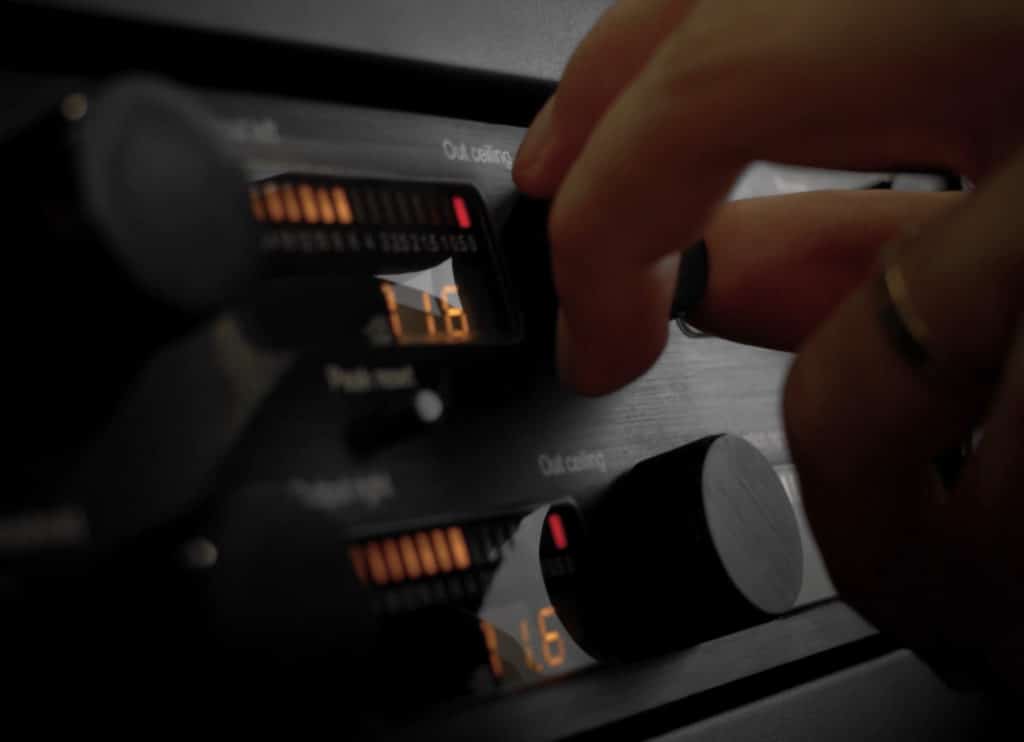
The master keeps the track's total distortion and frequency response balanced.
The instrumentation is both blended and occupying a unique sonic space, while the details and transients peak through just the right amount.
If you’re making unique sludge rock or metal music, take a listen to ‘Beat Up.’

This master is great for rock music that's on the border of being metal.
If you want to learn how to master rock music, check out our blog post on the topic:
Conclusion
Although you may not find every one of these references to be useful, there’s bound to be one that will help you make a better mix or master.
These masters offer a balanced sound, or at the very least, a sound that highlights the best parts of their respective sub-genres.
They may not be perfect references, but they’re almost certainly some of the better ones out there.
Try utilizing these references the next time you track, mix, or master a metal track. Also, if you know of some references that you think are better, let us know in the comment section of the video.
If you’re working on metal music that you’d like to hear mastered, send it to us here:
We’ll master it for you and send you a free sample to review.




